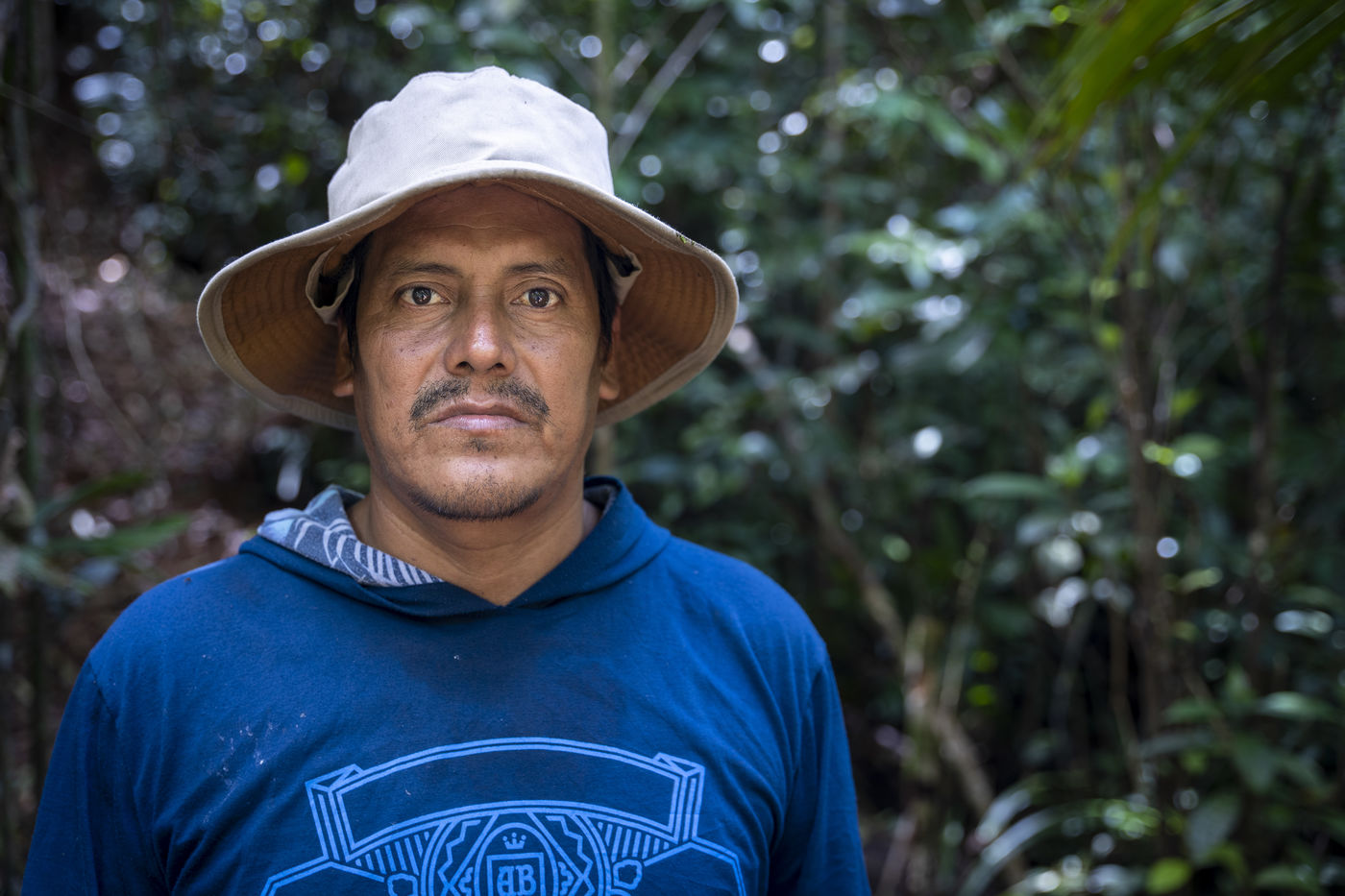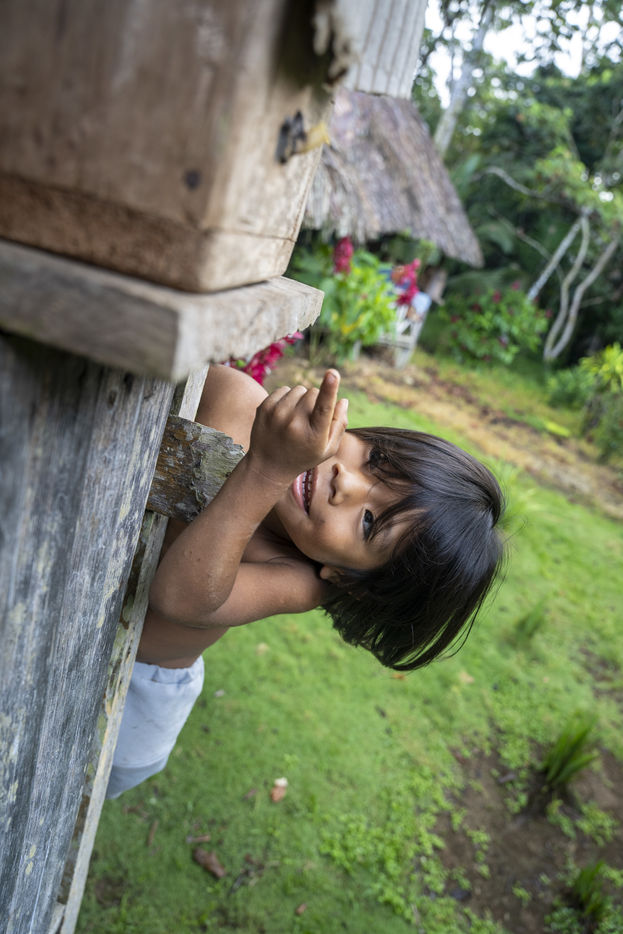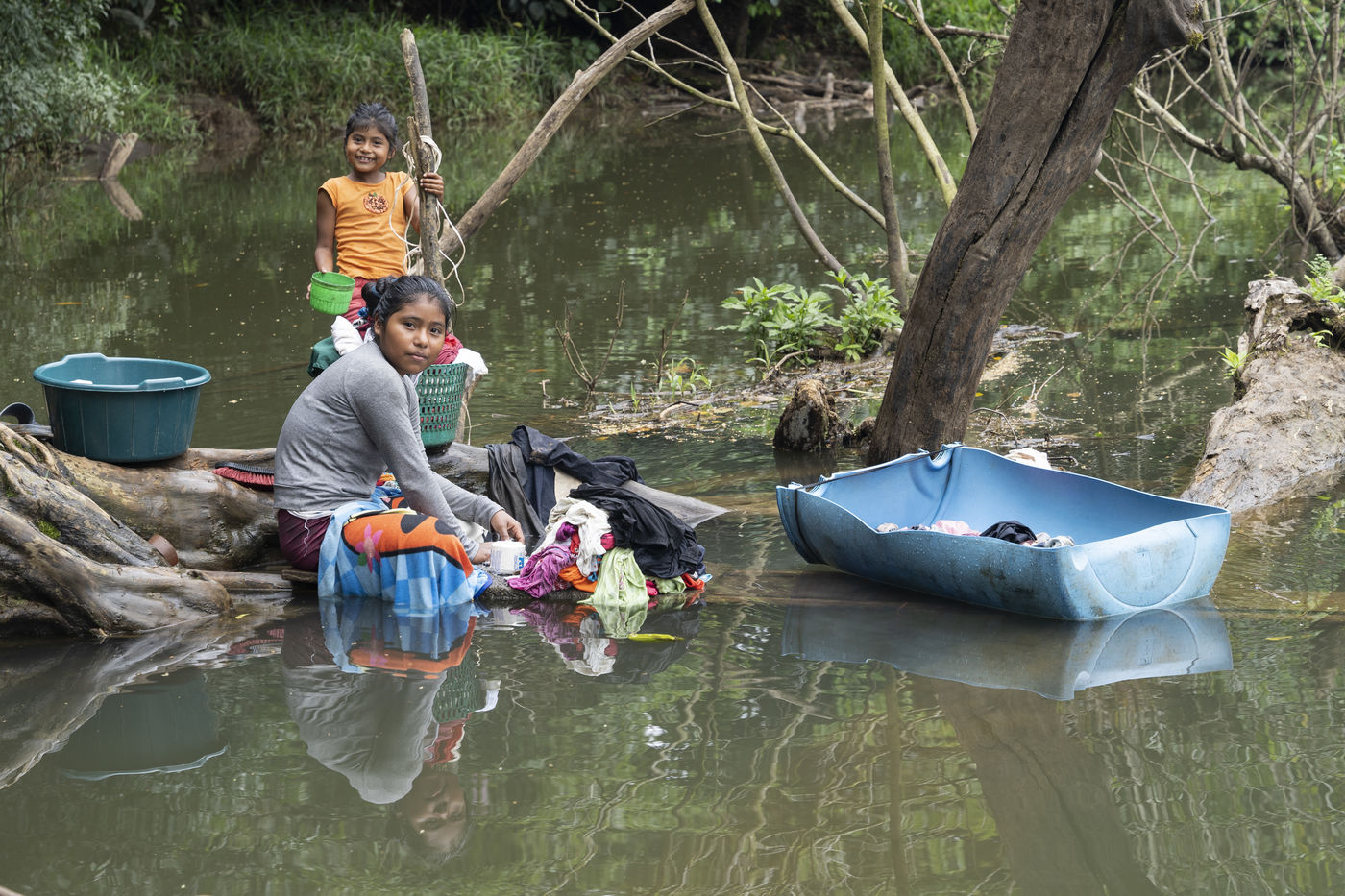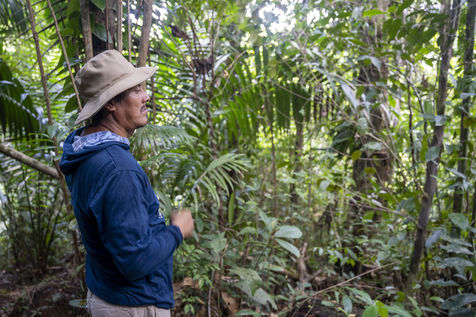Pour accéder à la série en entier, vous devez vous logger ou demander un compte Hans Lucas en cliquant ici.
Nicaragua - Peuple Ramas et forêt sacrifiés - ethnocide et ecocide
Au coeur de la forêt tropicale de la réserve biologique d'Indio Maíz au Nicaragua, le peuple autochtone Rama et les Kriol d'ascendance africaine voient leur culture et leur terre de plus en plus menacées.
« Ici, c'est l'Eldorado des nouveaux colons ! Ils viennent à la réserve biologique d'Indio Maiz, ils déboisent soit en brûlant soit à la tronçonneuse, ils plantent du maïs, des haricots ou du fourrage, pour l'installation des vaches et ils revendent. En un an ils font un gros profit et les colons suivants font de même, ils s'installent, agrandissent le terrain et ça continue. Jour après jour, la réserve disparaît », déclare Santo, un indien Rama vivant le long de la rivière Indio.
70% de la réserve biologique Indio Maiz fait partie du territoire Rama et Kriol. Ce territoire normalement accessible uniquement aux Rama et Kriol et géré par le gouvernement du territoire Rama et Kriol basé à Bluefields a cessé d'être protégé par le gouvernement national depuis 2015. Cependant, le changement a vraiment eu lieu en 2018, après l'incendie criminel qui a détruit 5000 hectares de forêt perpétrés par l'un de ces « nouveaux colons », habitant pauvre du reste du pays.
Les ONG locales ont essayé de faire du bruit sur cette situation. En conséquence, elles ont été dissoutes, interdites de parole et leurs membres ont été contraints à l'exil comme Amaru Ruiz, président de la Fundación Del Río.
On observe aujourd'hui un flot quotidien de bateaux naviguant sur le fleuve Indio que normalement seuls les indiens Rama et le peuple Kriol sont autorisés à emprunter. Ces derniers affirment : « Dès que nous essayons de discuter avec les colons appelé aussi Mestizos, ils sortent les armes. Ils savent qu'ils sont illégaux, mais ils savent aussi qu'ils sont protégés par le gouvernement. Avant, il y avait un poste de contrôle à l'entrée du fleuve et aussi deux bateaux qui patrouillaient régulièrement pour lutter contre l'occupation illégale des terres et le braconnage. Désormais, le braconnage est devenu la norme et plusieurs espèces d'animaux comme les jaguars, les tapirs, les aras verts et les pécaris sont de plus en plus difficiles à rencontrer. Et surtout, il y a de moins en moins de poisson alors que c'est notre alimentation de base ».
Les quatre rangers Rama, comme Pablo Solano, équipés par le gouvernement Rama et Kriol de GPS signalent les violations avec la localisation de nouveaux colons au gouvernement Rama et Kriol. « Nous envoyons les rapports mais rien ne se passe », s'énerve Pablo qui déplore plus de 1000 habitations illégales. Et un niveau de déforestation estimé entre 20 et 30% d'un espace qui est considéré comme une des plus ancienne et plus grande forêt tropicale d'Amérique centrale.
Texte complet sur demande
Nicaragua -Ramas people and forest sacrificed- ethnocide and ecocide
Deep in the rainforest of Nicaragua's Indio Maíz Biological Reserve, the indigenous Rama and afro-descendant Kriol people are fighting resolutely for their culture and traditions, which are increasingly threatened by the brazen destruction of the forest by land-grabbing cattle ranchers and land traffickers.
Here it's the El Dorado of the new settlers! They come to the Indio Maiz Biological Reserve, they deforest either by burning or with a chainsaw, then plant corn, beans or cattle feed and they resell. In one year they make a big profit and the following settlers do the same, they settle, expand the land and it continues. Day after day the reserve is disappearing," said Santo, an Indian Rama living along the Indio River.
70% of the Indio Maiz Biological reserve forms part of the Rama and Kriol territory. Government protection of this territory normally only accessible to Rama and Kriol people and managed by the Rama and Kriol territory government based in Bluefields ceased in 2015. However, major changes really took place in 2018, after a criminal fire which destroyed 5,000 hectares of forest, perpetrated by one of these "new settlers", typically poor inhabitants from the rest of the country. Local NGOs that were trying to bring attention to this situation were dissolved, forbidden to speak and their members forced into exile, including Amaru Ruiz, president of the Fundación Del Río.
Today we observe a daily flow of boats navigating the Indio River that only the Rama Indians and the Kriol people are authorized to use. Both of these groups bear witness to the violence of land grabbing. "As soon as we try to speak with them, they pull out guns. They know they are here illegally, but they also know they are protected by the government. Before, there was a checkpoint at the entrance of the river and also two boats that patrolled regularly to fight against illegal land occupation and poaching. Now poaching has become the norm and several species of animals such as jaguars, tapirs, green macaws and peccaries are increasingly difficult to encounter. And above all, there are fewer and fewer fish even though it's our basic diet".
The four Rama rangers, like Pablo Solano, have been equipped by the Rama and Kriol government with GPS systems. They report violations and share the localization of new settlers to the authorities. "We send the reports but nothing happens" said an irritated Pablo.
These reports provide accurate information on the situation in the area. More than 1000 illegal farms are now located within the Indio Maiz Biological Reserve, with the largest covering over 3000 hectares. It's more difficult to accurately assess the number of cattle - in part because it is constantly increasing. "Some farms exceed 800 heads" affirms the ranger.









